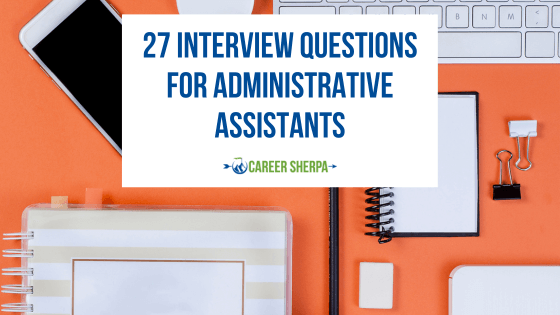Executive Spotlight: How To Develop Top Talent At Your Organization

In today’s rapidly evolving business landscape, the difference between thriving organizations and those merely surviving is their ability to cultivate and nurture top talent. With the right talent development strategy, a company will foster the growth and success of its most valuable assetâits peopleâempowering the organization to rise to new heights of excellence and innovation. How can your organization effectively harness and develop its top talent to not only meet the challenges of today but also shape a brighter future?
We recently asked our leading executives for their best tips on how to develop top talent at an organization.
Here are their responses…
John Schembari, Senior Education Academic And Operations Executive
To develop top talent within an organization, CEOs/boards should think strategically and comprehensively about organizational needs and who on staff has talent in those areasâthink “succession plan.” After this, provide staff members who show promise with opportunities to work on some mid-high profile leadership projects.
Recognize, however, that these individuals may struggle on these projects from time to time (imposter syndrome) and that leadership can be a lonely activity so provide ongoing leadership coaching and feedback from non-evaluative leadership facilitators. At the same time, provide ongoing opportunities for top talent to collaborate/work together on projects (meet weekly/bi-monthly) and to engage in problem-of-practice consultancies facilitated by the CEO/senior administration.
John Schembari is a current K-12 teacher/school leader academic improvement coach and former school building and district administrator. He loves to draw, travel, swing dance, and read nonfiction.
Ana Smith, Leadership Development & Learning Strategist

Developing top talent in an organization is a critical aspect of effective talent management and long-term success. As an expert, I can offer guidance on how to nurture and grow your top talent:
- Identify High-Potential Employees: First, identify employees with high potential and the desire to grow within the organization. Look for individuals who consistently excel in their roles, demonstrate leadership qualities, and show a willingness to take on new challenges.
- Create Individual Development Plans: Work with each high-potential employee to create personalized development plans tailored to their strengths, areas for improvement, and career aspirations. These plans should outline specific learning objectives, milestones, and timelines.
- Provide Challenging Opportunities: Offer top talent challenging assignments, projects, and stretch goals that allow them to develop new skills and capabilities. Exposure to diverse experiences will help them grow both professionally and personally.
- Offer Training and Development Programs: Invest in training and development programs that align with the organization’s goals and the individual needs of top talent. These programs may include workshops, seminars, online courses, and leadership development initiatives.
- Encourage Mentoring and Coaching: Pair high-potential employees with experienced mentors or coaches who can provide guidance, support, and constructive feedback. Mentoring relationships can significantly enhance professional growth and knowledge transfer.
- Promote a Learning Culture: Foster a culture of continuous learning and improvement within the organization. Encourage employees at all levels to seek out learning opportunities and share knowledge with their colleagues.
- Provide Regular Feedback: Regularly provide feedback and performance evaluations to top talent. Offer constructive criticism and recognition for their achievements to motivate them to continue excelling.
- Encourage Collaboration and Networking: Promote collaboration among employees and encourage top talent to build relationships with peers, leaders, and professionals outside the organization. Networking can lead to new perspectives and opportunities for growth.
- Support Work-Life Balance: Recognize the importance of work-life balance in talent development. Encourage employees to take time for personal well-being, which can enhance their overall performance and productivity.
- Offer Growth Opportunities: Demonstrate the organization’s commitment to the growth and advancement of top talent by offering opportunities for career progression, promotions, and lateral moves to expand their skill sets.
- Recognize and Reward Excellence: Recognize and reward top performers to reinforce their positive behavior and contributions. This recognition can be in the form of promotions, bonuses, public acknowledgments, or other forms of appreciation.
- Stay Current with Industry Trends: Encourage top talent to stay informed about industry trends, best practices, and emerging technologies. This knowledge will empower them to contribute innovative ideas and solutions to the organization.
By implementing these strategies, organizations can develop and retain top talent, fostering a culture of excellence and continuous improvement. Investing in employee development not only benefits the individuals but also contributes to the organization’s long-term success and competitiveness.
Ana Smith helps people & organizations achieve their full talent potential by developing and co-creating people strategies and customized solutions, and turning them into impactful outcomes and collaborative relationships, using coaching as the “red thread.”
Michael Willis, Sports Business Operations Executive

Developing top talent isn’t about cookie-cutter plans or following the herd. It’s about daring to disrupt the traditional norms and reimagining what talent development means. Start by unearthing the hidden gems within your organizationâthose unconventional thinkers who might not fit the mold but possess raw potential.
Instead of confining them to standard roles, empower them to lead projects challenging the status quo. Encourage them to cross-pollinate ideas across departments, even if it initially seems unconventional. And forget about the safe zoneâthrow them into the deep end with assignments that stretch their abilities and force them to innovate.
Unleash the mavericks! Developing top talent demands audacity; it’s about unearthing those hidden gems that defy convention and challenging them to reshape the future. Hunt for the quiet rebels, the unsung heroes buried within your ranksâthey’re the ones who shatter ceilings and obliterate limits.
But don’t just hand them a roadmap; fuel their fire with opportunities that spark evolution. Plunge them into the heart of projects that teeter on the edge of what’s possible. Let them wrestle with complexity, for it’s in those battles that innovation is forged.
Traditional mentors are out; disruptive allies are in. Pair your talent with unconventional guidesâartists, scientists, anyone who can spark new neural connections. Disruption doesn’t come from the familiar.
Embrace reverse mentorship, where the rising talent teaches the established leaders a thing or two about new technologies, fresh perspectives, and the changing workforce. Shake up the routine by hosting “failure parties” to celebrate the risks taken and the lessons learned because failure is the ultimate teacher in a disruptive world.
- Succession planning. Integrate top talent development into succession planning. Identify potential future leaders and groom them for leadership roles within the organization.
- Create exposure. The C-suite demands holistic understanding. Rotate them through diverse departments and projects. Make them adaptable, agile thinkers.
- Instill strategic thinking. The C-suite isn’t just about operations; it’s about shaping the future. Provide opportunities for crafting and executing strategies.
- Leadership crucible. Assign high-pressure leadership roles. They’ll hone their decision-making, crisis management, and people skills here.
Remember, developing top talent is an ongoing process that requires commitment, patience, and a genuine investment in your employees’ growth. By fostering a culture of learning and empowerment, organizations can create an environment where top talent thrives and contributes to long-term success.
Michael Willis has 18+ years of experience working with accounting & sports organizations and has managed P&Ls of $10M – $125M+ with budgets of $3M-$50M+. He worked for the NFL for 22 1/2 years, mainly with the game officials working on the financial/accounting side of the business.
Lisa Perry, Global Marketing Executive

In today’s competitive business landscape, the success of an organization hinges on the quality of its talent. Attracting and retaining top-tier professionals is only the beginning; the real challenge lies in developing that talent to its fullest potential. A strategic approach to nurturing and honing the skills of your employees can create a workforce that not only meets current demands but also drives innovation and growth for years to come. Let’s delve into key strategies for developing top talent within your organization.
Cultivate a Learning Culture
A learning culture is the cornerstone of talent development. Encourage continuous learning by providing opportunities for employees to acquire new skills, attend workshops, and access online resources. Support them in pursuing certifications and advanced degrees that align with their career paths. When employees feel that learning and growth are valued within the organization, they are more likely to invest time and effort into their own development.
Personalized Development Plans
Iâve seen that a one-size-fits-all approach to talent development is a thing of the past. Each employee has unique strengths, weaknesses, and aspirations. Work with them to create personalized development plans that align with both their career goals and the organization’s needs. Regularly revisit and update these plans to ensure they remain relevant and challenging.
Dual Mentoring and Coaching for Holistic Growth
Implementing a dual mentorship program that pairs seasoned top executives with rising talents facilitates a two-way exchange of insights. On one hand, top executives provide invaluable guidance and strategic direction to their mentees, helping them navigate challenges and cultivate skills. On the other hand, these executives gain fresh perspectives from their mentees, reconnecting them with the pulse of the organization and innovative ideas.
Stretch Assignments
Give high-potential employees the opportunity to step outside their comfort zones by assigning them tasks or projects that require them to develop new skills. Stretch assignments challenge individuals to rise to the occasion, fostering both skill growth and confidence. These experiences also help identify emerging leaders within the organization.
Regular Feedback and Performance Reviews
Transparent and constructive feedback is essential for growth. Implement regular performance reviews that go beyond annual evaluations. Provide timely feedback on accomplishments and areas for improvement. Create a safe space for employees to discuss their career goals and express any concerns they might have.
Skill Development Workshops
Host workshops and training sessions that target specific skills relevant to the organization’s objectives. Whether it’s leadership skills, technical expertise, or soft skills like communication and teamwork, investing in these workshops empowers employees to contribute more effectively to their teams and the organization as a whole.
Recognition and Rewards
Recognizing and rewarding outstanding performance not only boosts morale but also incentivizes continuous improvement. Implement a recognition program that highlights exceptional achievements and encourages others to aim for excellence. This recognition can come in various forms, from monetary rewards to public acknowledgments.
Opportunities for Career Progression
Top talent seeks growth opportunities. Establish clear career paths within the organization, complete with advancement criteria. Provide a roadmap that enables employees to visualize their trajectory and the steps required to reach the next level. This fosters a sense of purpose and commitment to long-term growth.
Collaborative Projects
Encourage cross-functional collaboration on projects that require employees to work with colleagues from different departments. This not only exposes them to diverse perspectives but also cultivates teamwork and adaptabilityâcrucial skills for career advancement.
Empower Decision-Making
Provide employees with opportunities to make decisions and take ownership of projects. Empowerment fosters a sense of responsibility and accountability, encouraging individuals to develop problem-solving skills and strategic thinking.
Developing top talent is an investment in the future success of your organization. By nurturing the growth of your employees, you’re not only shaping their careers but also contributing to the long-term success of your organization in an increasingly dynamic and competitive world.
To delve deeper into strategies that foster talent growth and organizational excellence, I invite you to explore my book, “How to Develop a Brand Strategy,” which provides a step-by-step guide to crafting a robust brand strategy that aligns with your business goals. Just as nurturing talent propels businesses forward, a strong brand strategy propels your organization to stand out in the market.
Lisa Perry helps companies drive revenue by using consumer trends, insights, and data analytics to innovate their approach to marketing.
How do you develop top talent at your organization? Join the conversation inside Work It Daily’s Executive Program.


























